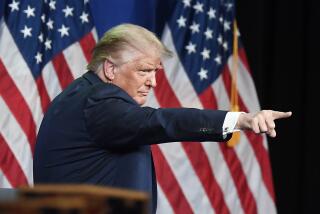Scotland’s government unveils rosy blueprint for independence
LONDON — An independent Scotland would be richer, fairer and nuclear-free but would keep the British pound, the queen and membership in the European Union and NATO, the Scottish government pledged Tuesday, laying out its most comprehensive blueprint for secession from Britain.
With less than a year before Scotland votes on whether to seek a divorce from England and Wales, campaigners for the “yes” side released a 670-page document outlining the practicalities and priorities of independence, addressing topics as diverse as currency arrangements and the provision of free child care for all preschoolers.
But the manifesto immediately came under attack as little more than a wish list whose most important elements are by no means assured. Opponents accused Scottish officials of dodging tough questions and of misleading voters about the obstacles Scotland would face as an independent nation of 5 million people.
September’s referendum will put the political map of Britain to its biggest test since Ireland broke away from the British crown nearly 100 years ago. A victory for Scottish nationalists would end more than three centuries of being yoked to their brethren south of the border.
Alex Salmond, first minister of Scotland’s semiautonomous government and leader of the Scottish National Party, or SNP, said that the calculus was simple.
“Ultimately, at the heart of this debate, there’s only one question and one choice: Do we the people who live and work in Scotland believe that we are the best people to take the big decisions about our future?” Salmond said at a news conference in Glasgow. “It’ll be decided by the people. Scotland’s future is now in Scotland’s hands.”
An independent Scotland could pursue its own vision of a just society without interference from London, Salmond said, with an agenda that includes the expulsion of British nuclear submarines from Scottish waters, greater investment in children and better social services. Being part of Britain has cost Scots their fair share of revenue from North Sea oil, which independence — projected to begin March 24, 2016 — would allow them to reclaim, he said.
That rosy view has been challenged, however, not just by Salmond’s foes but by a respected nonpartisan think tank, which last week said that a separate Scotland would immediately face drastic spending cuts and higher taxes to bring down its deficit. An aging population and declining oil revenue would add to budget pressures over the long term.
Unionists contend that other key promises of the independence campaign are far from guaranteed. In London, officials have begun advising the Scottish government not to take for granted that it could continue to use the British pound as its currency. Even if it did, the Bank of England would control money supply and interest rates, making for a paltry sort of sovereignty for Scotland, critics say.
“The SNP are asking for a divorce, but they want to keep the joint bank account,” opposition lawmaker Johann Lamont told the Scottish Parliament. Holding on to the pound would require Scotland “to rely on the goodwill of the rest of the United Kingdom, the same people [the SNP] claims are [holding] us down.”
Anti-independence activists also question the assumption that Scotland would easily gain entry on its own to the 28-nation EU, the world’s largest trading bloc, or the North Atlantic Treaty Organization. The prospectus published Tuesday envisions a standing Scottish army of 15,000 troops, sheltered under the NATO umbrella.
Opinion polls in Scotland have never shown a majority in favor of outright independence. But a large number of voters remain undecided.
“The positive beats the negative,” Salmond said. “If you’ve got a vision for the future, then that’s the right ground to be on if you want to win either an election or a referendum.... We’re on the ‘yes’ side of this campaign, the positive side of this argument, and we will win this referendum.”
More to Read
Sign up for Essential California
The most important California stories and recommendations in your inbox every morning.
You may occasionally receive promotional content from the Los Angeles Times.









